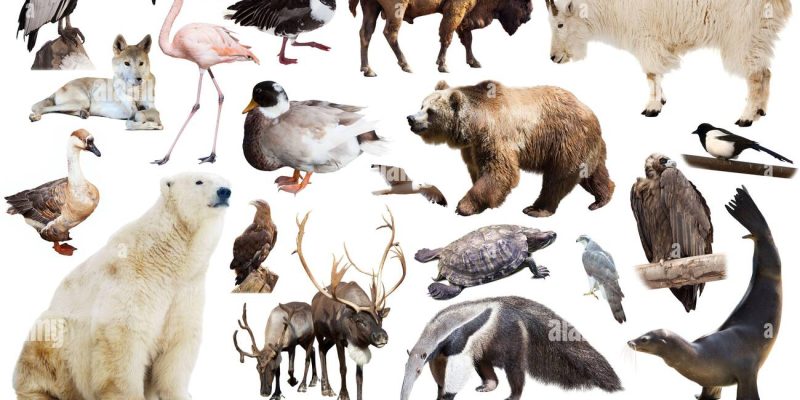North Animals: 10 Incredible Species You Need to Know

The northern regions of our planet are home to some of the most fascinating and resilient creatures on Earth. These animals have adapted to extreme cold, harsh landscapes, and limited food sources, making them some of nature’s most incredible survivors. Whether it’s the Arctic tundra, dense boreal forests, or icy waters, North Animals have evolved unique traits to thrive in these challenging environments.
In this article, we’ll explore 10 incredible North Animals that you need to know. From the majestic polar bear to the elusive wolverine, each of these species plays a crucial role in their ecosystem.
Polar Bear – The King of the Arctic
The polar bear (Ursus maritimus) is one of the most iconic North Animals, perfectly adapted to its icy home. With a thick layer of blubber and water-repellent fur, it can survive freezing temperatures and swim long distances in search of food.
Polar bears are the largest land carnivores, primarily feeding on seals. They rely on sea ice for hunting, which is why climate change poses a serious threat to their population.
Arctic Fox – A Master of Survival
The Arctic fox (Vulpes lagopus) is another incredible member of the North Animals group. This small but resilient fox has thick white fur in winter, which turns brown in summer, providing excellent camouflage.
Arctic foxes are scavengers, often following polar bears to feed on leftovers. Their ability to survive extreme cold is due to their dense fur, small body size, and an incredible metabolism that helps them conserve heat.
Snowy Owl – The Arctic Predator of the Skies
One of the most beautiful North Animals, the snowy owl (Bubo scandiacus), is famous for its striking white plumage and piercing yellow eyes. These birds are native to the Arctic tundra and are expert hunters, preying mainly on lemmings and other small mammals.
Unlike many other owl species, snowy owls are diurnal, meaning they hunt during the day. Their populations fluctuate based on food availability, especially the number of lemmings in a given year.
Moose – The Giants of the Boreal Forest
The moose (Alces alces) is the largest species in the deer family and one of the most recognizable North Animals. These towering herbivores can weigh over 1,500 pounds and have enormous antlers that can span up to six feet.
Moose are excellent swimmers and are often found near lakes and rivers. They feed on aquatic plants, shrubs, and tree bark, helping maintain the balance of the forest ecosystem.
Wolverine – The Fierce and Fearless Hunter
The wolverine (Gulo gulo) is one of the most elusive and powerful North Animals. Despite its small size, this animal is known for its incredible strength and ferocity.
Wolverines are scavengers and opportunistic hunters, capable of taking down prey much larger than themselves. They have strong jaws and sharp teeth, allowing them to crush bones and eat frozen carcasses. Their tough nature makes them one of the most formidable predators in the northern wilderness.
Arctic Hare – Built for the Cold
The Arctic hare (Lepus arcticus) is another remarkable example of North Animals adapted to extreme conditions. Its thick fur coat and compact body help retain heat, allowing it to survive frigid Arctic temperatures.
Arctic hares are social animals that often gather in large groups to protect themselves from predators like Arctic foxes and snowy owls. They can also reach speeds of up to 40 mph when escaping danger.
Narwhal – The Unicorn of the Sea
Among the most mysterious North Animals is the narwhal (Monodon monoceros), often called the “unicorn of the sea” due to its long, spiraled tusk. This tusk, which is actually an elongated tooth, can grow up to 10 feet long.
Narwhals live in Arctic waters and rely on echolocation to navigate and hunt in the dark, icy depths. Their populations are threatened by climate change and hunting, making conservation efforts crucial.
Caribou – The Migratory Marvel
Caribou, also known as reindeer (Rangifer tarandus), are among the most famous North Animals due to their incredible migrations. These large herbivores travel thousands of miles each year in search of food and suitable breeding grounds.
Caribou have specialized hooves that allow them to walk on snow and ice without sinking. Their thick fur and ability to store fat help them survive the long, cold winters.
Harp Seal – The Ice-Loving Swimmer
The harp seal (Pagophilus groenlandicus) is one of the most adorable North Animals, known for its fluffy white pups. These marine mammals spend most of their lives in icy Arctic waters, using their streamlined bodies and strong flippers to navigate the cold ocean.
Harp seals rely on sea ice for giving birth and raising their young. However, due to rising temperatures, the loss of ice habitat is a growing concern for their survival.
Bald Eagle – The Majestic Hunter
Though often associated with the United States, the bald eagle (Haliaeetus leucocephalus) is also one of the most powerful North Animals, found in Alaska and northern Canada. These raptors have an impressive wingspan of up to 7.5 feet and are known for their keen eyesight.
Bald eagles primarily hunt fish and are excellent at spotting prey from great heights. Thanks to conservation efforts, their populations have recovered significantly from the brink of extinction.
Conclusion
The North Animals we’ve explored in this article showcase the incredible adaptability and resilience of wildlife in the northern regions. Each of these species plays a crucial role in maintaining the delicate balance of their ecosystem, from predators like the polar bear to herbivores like the moose.
However, many of these animals face serious threats due to climate change, habitat loss, and human activity. Conservation efforts are essential to ensure that future generations can continue to marvel at these extraordinary creatures.
By understanding and appreciating these North Animals, we can contribute to their protection and support efforts to preserve the unique ecosystems they call home.
FAQs
Q1. What are some of the most resilient animals in cold climates?
Many species, such as the polar bear, Arctic fox, and snowy owl, have adapted to survive in freezing temperatures with thick fur, blubber, and specialized behaviors.
Q2. How do animals survive in extreme winter conditions?
They use adaptations like thick fur, fat storage, seasonal camouflage, and hibernation to conserve energy and stay warm in harsh environments.
Q3. Which predators dominate the Arctic ecosystem?
Top predators include the polar bear, wolverine, and bald eagle, all of which rely on keen hunting skills and physical adaptations to thrive in their habitats.
Q4. What impact does climate change have on Arctic wildlife?
Rising temperatures and melting ice are reducing habitats and food sources, threatening species that depend on stable winter conditions for survival.
Q5. How can people help protect wildlife in northern regions?
Supporting conservation programs, reducing carbon emissions, and raising awareness about environmental issues can help safeguard species from habitat loss and climate change.
Also read: What is Patagonia Famous For: 10 Stunning Natural Wonders You Must See











